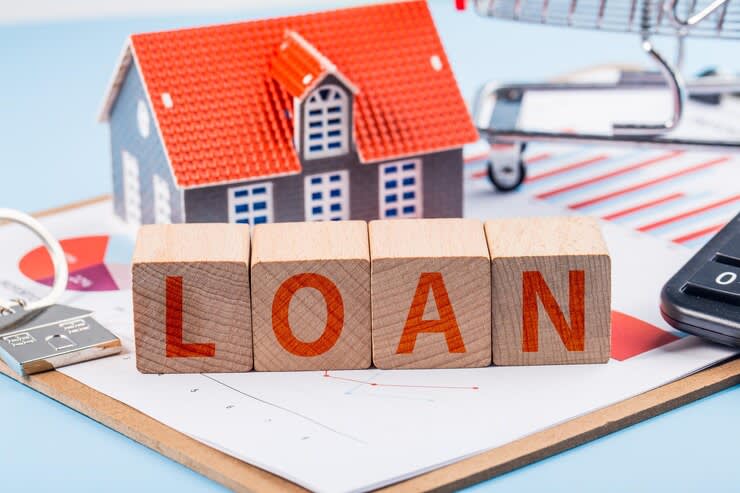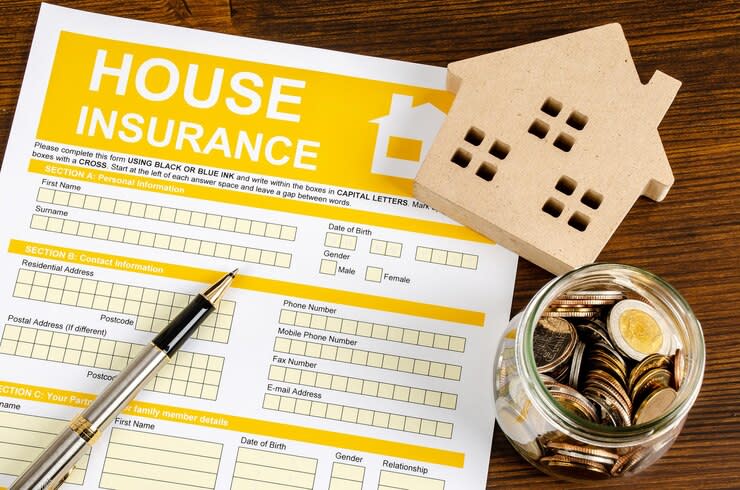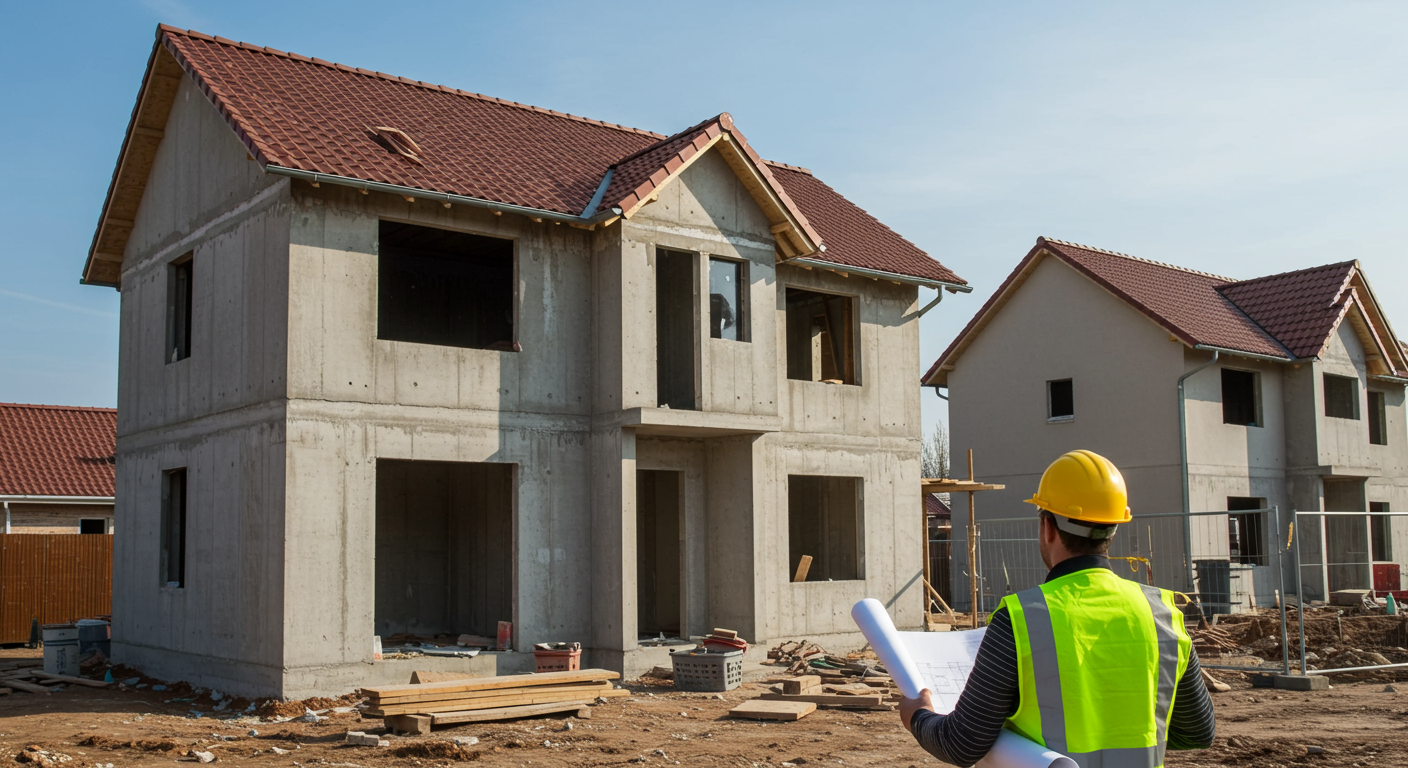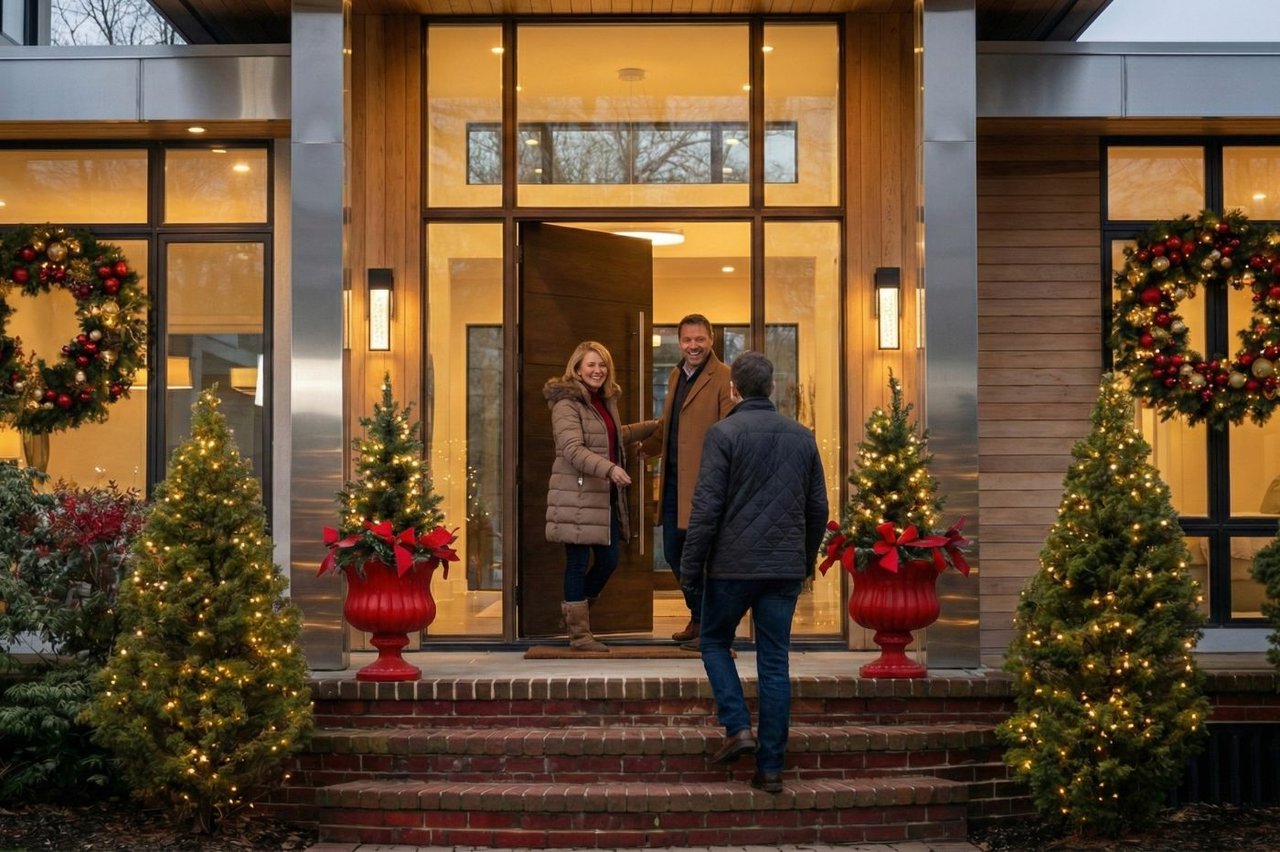Remodeling a luxury house would take quite a fortune, but the effort will be worth it. But if you're asking if a home improvement loan is possible, the answer is "Yes." In Puerto Rico, you can get a loan for remodeling a luxury house, similar to many other places. Financial institutions, banks, and other lending entities offer various types of loans that can be used for home improvement or remodeling projects, including those for luxury homes.
In this blog, we'll present some of the common requirements and the best options you can consider.
Key Takeaways
- Various home improvement loan options are available in Puerto Rico, including Home Equity Loans, Personal Loans, Construction Loans, and Mortgage Refinance.
- Key loan requirements include a good credit score, favorable debt-to-income ratio, stable income and employment proof, and sufficient home equity.
- Each loan type has unique advantages and disadvantages, such as lower interest rates for secured loans and simpler application processes for unsecured loans.
- It's important to shop around, compare offers, consult a financial advisor, understand loan requirements, and assess your financial situation before choosing a loan.
Common Loan Requirements
Credit Score
A good to excellent credit score is critical across all loan types. It not only influences your eligibility but also affects the interest rates and terms you're offered. Scores above 660 are generally the minimum for secured loans like Home Equity Loans and HELOCs, with higher scores preferred.
For Personal Loans and Construction Loans, scores of 600 and above are typical, but again, higher scores can secure better rates. The most favorable terms often require scores of 740 or higher.
Debt-to-Income Ratio (DTI)
Your DTI ratio, which compares your monthly debt obligations to your monthly income, is a crucial metric for lenders. It helps them assess your ability to manage additional debt. A DTI of 43% or lower is generally preferred across loan types, though specific requirements can vary. Some lenders may allow higher DTI ratios, but lower ratios are usually more favorable.
Proof of Income and Employment
Demonstrating stable income and employment is essential for all loan types. Lenders require evidence that you can afford the loan payments, typically through pay stubs, tax returns, and W-2 or 1099 forms. This requirement ensures borrowers have a steady income source to manage their new financial obligations.
Appraisal and Equity
An appraisal may be required to determine the home's market value for loans secured against your home (Home Equity Loans, HELOCs, and Mortgage Refinance). This helps calculate the equity you have in your home, which is pivotal for securing the loan. Generally, lenders require you to have a certain amount of equity, often at least 15-20% for Home Equity Loans and HELOCs, and at least 20% equity remaining after refinancing.
4 Types of Home Improvement Loans
1. Home Equity Loans and Lines of Credit (HELOCs)
If you own a home and have built up equity, a home equity loan or a HELOC might be a good option. These loans are secured against the equity you have in your home and can provide you with a lump sum or a credit line to use for your remodeling.
Specific Requirements:
- Equity in Your Home: This is the most critical requirement. You must have sufficient equity in your home, meaning your home's value exceeds the amount you owe on your mortgage. Lenders typically require you to have at least 15-20% equity in your home, although this can vary.
- Payment History: A history of making timely payments on your mortgage and other debts can be beneficial. Lenders will review your payment history to assess your reliability as a borrower.
- Additional Documentation: You may also need to provide additional documents, such as proof of homeowners insurance, a clear title to the home, and any other paperwork the lender deems necessary.
2. Personal Loans
Unsecured personal loans can also be used for home remodeling projects. While these don't require collateral, the interest rates might be higher than secured loans. The advantage is that the application process can be simpler and faster.
Specific Requirements:
- Credit History: A history of responsible credit use and timely payments can be beneficial. Lenders will review your credit report to assess your past behavior with credit and other debts.
- Loan Amount and Repayment Terms: The amount you wish to borrow and the term over which you plan to repay the loan can also affect your eligibility. Lenders will consider whether the requested loan amount is reasonable based on your financial situation and whether you can realistically afford the monthly payments.
- Purpose of the Loan: While many lenders do not restrict how you can use a personal loan, some may inquire about the purpose of the loan to assess its risk.
3. Construction Loans
For major renovations such as bathroom renovations that might be considered construction projects, a construction loan could be appropriate. These loans are typically short-term and have the particularity that they are converted into a traditional mortgage after the construction or renovation is completed. Because these projects involve significant changes and can carry more risk for lenders, the requirements for construction loans are often more stringent than other types of home loans.
Specific Requirements:
- Down Payment: Construction loans typically require a larger down payment than traditional mortgages. Lenders typically require 20-30% of the projected cost of the construction project as a down payment.
- Detailed Project Plan: Lenders will want a comprehensive plan for the construction project, including detailed blueprints, a timeline, and a budget. This plan helps lenders assess the feasibility of the project and the likelihood of its completion.
- Qualified Builder: Many lenders require a licensed, insured, and reputable builder or contractor to carry out the construction. They may request the builder's credentials, financial stability, and track record for completing projects on time and within budget.
- Interest Reserves: Some construction loans require the borrower to have interest reserves. These are funds set aside to cover the interest payments during the construction period, during which the borrower might not be residing in the home and might be paying for alternate accommodations.
- Insurance: Builders' risk insurance (to cover the project during construction), and liability insurance may be required. Upon completion, a standard homeowner's insurance policy will also be necessary.
- Inspections and Disbursements: Construction loans typically involve periodic inspections by the lender to ensure the project proceeds as planned. Funds are usually disbursed in stages based on the completion of predetermined phases of the project.
4. Mortgage Refinance
Refinancing your current mortgage might also provide you with extra cash for remodeling. With a cash-out refinance, you replace your existing mortgage with a new one for a larger amount than you owe on your home, and you receive the difference in cash.
Specific Requirements:
- Equity in Your Home: To qualify for a cash-out refinance, you typically need a certain amount of equity built up in your home. Many lenders require at least 20% equity after the refinance, meaning you cannot borrow more than 80% of your home's value.
- Closing Costs: Refinancing a mortgage involves closing costs similar to those you paid when you first bought your home. These include lender fees, appraisal fees, title insurance, and other closing expenses. If the lender allows, you'll need the funds available to cover these costs or the option to roll them into the new loan.
- Loan-to-Value Ratio (LTV): The LTV ratio after refinancing is a key factor. For a cash-out refinance, lenders typically cap the LTV ratio at 80%, though this can vary depending on the lender and the type of loan (e.g., FHA, VA, or conventional loans may have different limits).
- No or Low Prepayment Penalties: Ensure your current mortgage does not have steep prepayment penalties that could negate the benefits of refinancing.
Here is a consolidated presentation of all 4 loan types that you may choose from:
|
Loan Type |
Description |
Advantage over other Loan Types |
Disadvantages over other Loan Types |
|
Home Equity Loans and Lines of Credit (HELOCs) |
Secured against the equity in your home, offering a lump sum or a credit line for remodeling. |
Lower interest rates due to being secured; flexibility in borrowing and repayment. |
Requires equity in the home; risk of foreclosure if unable to repay. |
|
Personal Loans |
Unsecured loans can be used for various purposes, including home remodeling, with no collateral required. |
Simpler and faster application process; no collateral required. |
Higher interest rates due to being unsecured; potentially stricter credit requirements. |
|
Construction Loans |
After completion, short-term loans for major renovations or construction projects are converted into a traditional mortgage. |
Specifically designed for construction or major renovations, funds are disbursed in stages as the project progresses. |
Requires detailed project plans and a qualified builder; higher down payment needed. |
|
Mortgage Refinance |
This involves replacing your existing mortgage with a new one for a larger amount than you owe and providing cash for the difference. |
Can consolidate debt and potentially lower overall interest rates; provides cash for remodeling without requiring a separate loan. |
Closing costs and the potential for higher total loan costs require sufficient home equity.
|
Helpful Tips Before You Start a Home Improvement Loan
Before diving into the loan process for your home improvement project in Puerto Rico, it's crucial to heed these valuable insights to ensure a smooth and successful loan experience.
1. Shop Around
Don't settle for the first offer you come across. It's crucial to compare offers from multiple lenders to ensure you're getting the best rates and terms available for your home improvement loan.
2. Compare Offers
Look at the interest rates, terms, fees, and other costs of each loan offer. This can help you understand the total cost of the loan over time.
3. Consult a Financial Advisor or Loan Officer
Before making any decisions, it might be beneficial to speak with a financial expert. They can provide personalized advice based on your financial situation and help you understand the implications of taking out a loan.
4. Understand the Requirements
Different loans have different requirements, including minimum credit scores, equity requirements for your home, and acceptable debt-to-income ratios. Make sure you know these for each loan type you're considering.
5. Be Aware of Your Financial Situation
Assess your current financial health, including income stability and existing debt, to determine how comfortably you can manage additional loan payments.
Conclusion
Remodeling a luxury home in Puerto Rico presents various financing options, including Home Equity Loans, Personal Loans, Construction Loans, and Mortgage Refinance. Each has unique advantages and requirements tailored to different homeowner needs.
At Christie's International Real Estate Puerto Rico, we understand the intricacies of these financial pathways. We are dedicated to guiding our clients through selecting the most suitable option for their luxury home remodeling projects. Our expertise extends beyond financing, encompassing comprehensive services for those looking to buy, sell, or rent out their properties, ensuring a seamless and satisfying real estate experience.
Contact Christie's International Real Estate Puerto Rico today and let us help you turn your luxury home into the masterpiece you've always envisioned.
Related Articles:
- 7 Key Advantages of Investing in Land for Your Luxury Puerto Rico Real Estate
- Are There Any Incentives for Buying Property in Puerto Rico?
- What Makes a Luxury Mountain Home Worth It as Your Puerto Rico Real Estate?
FAQs
Can I use a home improvement loan for any type of renovation, or are there restrictions on how the funds can be used?
Home improvement loans are generally flexible and can be used for various renovations; some lenders may have specific restrictions on how the funds can be used. Typically, the funds must be used for projects that improve the home's value, safety, or livability. This can include remodeling kitchens and bathrooms, adding new rooms, upgrading HVAC systems, and other similar projects. It is essential to check with your lender for any specific restrictions or guidelines they may have.
How long does it typically take to get approved for a home improvement loan, and what is the usual time frame for receiving the funds?
The approval time for a home improvement loan can vary depending on the type of loan and the lender. For personal loans, the approval process can be relatively quick, often within a few days. Home equity loans and HELOCs might take longer, generally a few weeks, as they require a home appraisal and more extensive documentation.
Construction loans can take even longer due to the need for detailed project plans and builder credentials. Once approved, the funds can be disbursed within a few days to a few weeks, depending on the loan type.
What happens if I can't complete my home improvement project within the expected time frame?
If you cannot complete your home improvement project within the expected time frame, it is crucial to communicate with your lender as soon as possible. Lenders typically have specific schedules and disbursement plans for construction loans tied to project milestones. Delays can sometimes be accommodated, which may require renegotiating terms or extending the loan period.
Since the funds have already been disbursed for other types of loans, managing your budget carefully is essential to ensure you can complete the project without requiring additional funds, which may incur further debt. Always review the terms of your loan agreement for any penalties or conditions related to project timelines.











